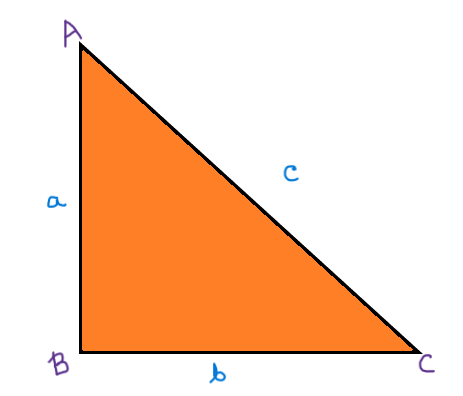CLASS-6
TRIANGLE - RIGHT ANGLE TRIANGLE
RIGHT ANGLE TRIANGLE -
A right triangle is a type of triangle that has one angle measuring exactly 90 degrees, which is called a right angle. The side opposite the right angle is called the hypotenuse, and the other two sides are known as the legs of the right triangle.
Key features of a right triangle:-
- Right Angle:- The most distinguishing feature is the presence of a 90-degree angle (right angle).
- Hypotenuse:- The side opposite the right angle is called the hypotenuse. It is the longest side in a right triangle.
- Legs:- The other two sides, forming the right angle, are called the legs. These legs can have different lengths, and the side lengths are often denoted as "a" and "b."
The Pythagorean Theorem is a fundamental concept related to right triangles. It states that in a right triangle, the square of the length of the hypotenuse (c) is equal to the sum of the squares of the lengths of the legs (a and b):-
c² = a²+ b².
Here's an illustration of a right triangle:

In the above triangle ABC:-
- Angle B is the right angle.
- Side BC is the hypotenuse.
- Sides AB and AC are the legs.
Right triangles have practical applications in various fields, including trigonometry, physics, engineering, and geometry. The Pythagorean Theorem is often used to solve problems involving right triangles and their side lengths.